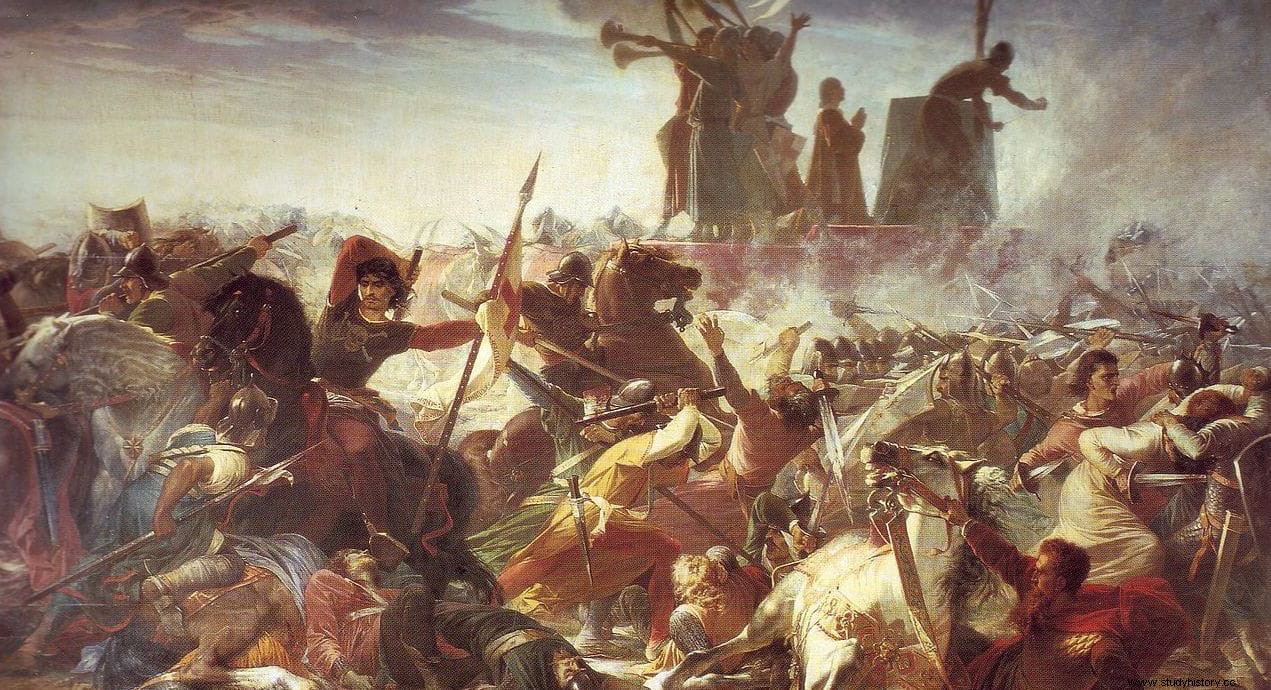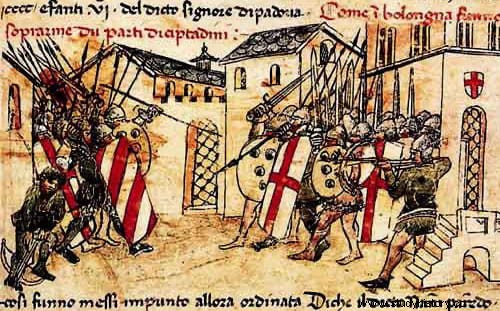As with many other European countries, Italy was not a unified state until the mid-19th century.
Until then it was a mosaic of kingdoms and republics that, as we go back in time, was made up of more and more loose tiles, something especially serious not because of the separation itself but because these pieces deeply hated each other and, in the manner of the city-states of Ancient Greece, they were involved in a succession of continuous confrontations that erupted in the fourteenth century with the war between Guelfs and gibellines .
Tradition, in the form of an epic poem (La secchia rapita ) written by Alessandro Tassoni in 1622 and later in an opera by Salieri, attributes its origin to the theft of a simple bucket of water , although the causes were obviously deeper.
To understand it better, we must go back to the year 1154, when Frederick Barbarossa , holder of the Holy Roman Empire , decided to incorporate the Italian territories into the imperial domain considering that his land rights for it were as legitimate as the spiritual ones wielded by the Holy See.
In this way, the terms Guelph and Ghibelline, originally Germanic (Welfen and Waibinglen ), went to the Mediterranean peninsula to respectively designate the supporters of the Pope and those of the Emperor . The Italian cities were divided and while some supported the first (such as Milan, Florence or Mantua), others supported the second (Siena, Pisa, Lucca...).
Federico was taking over one city after another:Milan, Tortona, Pavia, Bologna and all of Tuscany while he advanced unstoppably on Rome. Negotiations with Pope Alexander III were inconclusive and the emperor continued his campaign until he was finally defeated by the Lombard League in the battle of Legnano on May 29, 1176. Federico, who even lost his son in the fight, had to leave Italy due to the lack of resources to continue but left behind an ugly legacy of hatred and resentments , with borders drawn before that withdrawal whose seams were about to burst.
Modena and Bologna were the point where the seam occurred:in the absence of a reference authority, both cities vied for control of the economic resources of the region, based fundamentally on the countryside and commerce, dividing their preferences when it came to taking sides with a new emperor (Frederick died in 1190).

There was also an aggravating circumstance:the Guelph Bologna and the Ghibelline Modena were barely forty kilometers apart, which made hostilities easier. In 1296 the Bolognese made an incursion into enemy territory seizing Bazzano and Savigno, constituting the beginning of a rosary of border skirmishes that became a constant for decades, a continuous give and take of blows and counter-blows in which the neighboring towns changed hands from time to time. In 1309, Modena, Mantua, Parma and Reggio came under the rule of Rinaldo Bonacolsi , which intensified the attacks thereby earning the excommunication of the Pope, who also offered indulgences to anyone who eliminated Bonacolsi; at that time the pontiffs spent them like this and more at a time when the Western Schism had already occurred.
To make matters worse, Guelph and Ghibelline parties began to develop within the same city. The situation was therefore one of high tension and in the summer of 1325 the Bolognese carried out a razzia brutal that inflamed the spirits in Modena. Bonacolsi's revenge came in September, with the capture of the Monteveglio fort taking advantage of the social discontent of its inhabitants.
In the midst of the ensuing chaos, some Modenese soldiers mingled with the crowd of refugees fleeing the fighting and entered Bologna (which was a few kilometers away). There, in the center of the main square, near the Puerta de San Felice, they saw the classic water well with its bucket; It was a golden opportunity and they stole it.
It may seem incomprehensible, but this apparently absurd theft turned into a tremendous casus belli , by the indignation of the Bolognese. Why? Medieval Italian cities -not only cities, but also their neighborhoods with each other- had certain concepts that we could define as totemic , symbols of his honor and prestige. The fact of entering the house of the adversary and taking as a trophy, even if it were a simple wooden cube, was a feat (which reminds a little of the Indian custom of touching the enemy with a stick), and for the person affected an unforgivable affront. /P>
Bologna demanded the restitution of the object and, given the refusal, declared Modena open war . It was November 1325 and all the clashes up to then would be child's play compared to what was to come, because Bonacolsi was joined by Mantua, Verona, Milan and Ferrara, as well as troops of Emperor Rudolf.

That same month both sides collided in the battle of Zappolino , in the current municipality of Castello di Serravalle, Emilia-Romagna region. Some consider it the greatest battle of its time in Italy and probably one of the most unequal, since if the cavalry forces of the contenders were similar, around two thousand horsemen each, in infantry the superiority of the Guelphs was evident. , with thirty thousand infantry compared to the five thousand of Modena.
Despite everything, after just a couple of hours of fighting just before nightfall, the Modenese won . Total casualties are estimated to have been less than two thousand, but the winners overran the city's defenses and captured twenty-six Bolognese nobles.
Two months later, with a view to calming things down (something that did not really materialize until Charles V took over northern Italy in 1529), Modena returned Monteveglio and other possessions seized from the enemy. But there was one thing that remained forever in his possession:the happy cube, which today is kept in the Palazzo Comunale ; if someone visits the city, a replica is displayed in the Ghirlandina Tower.
